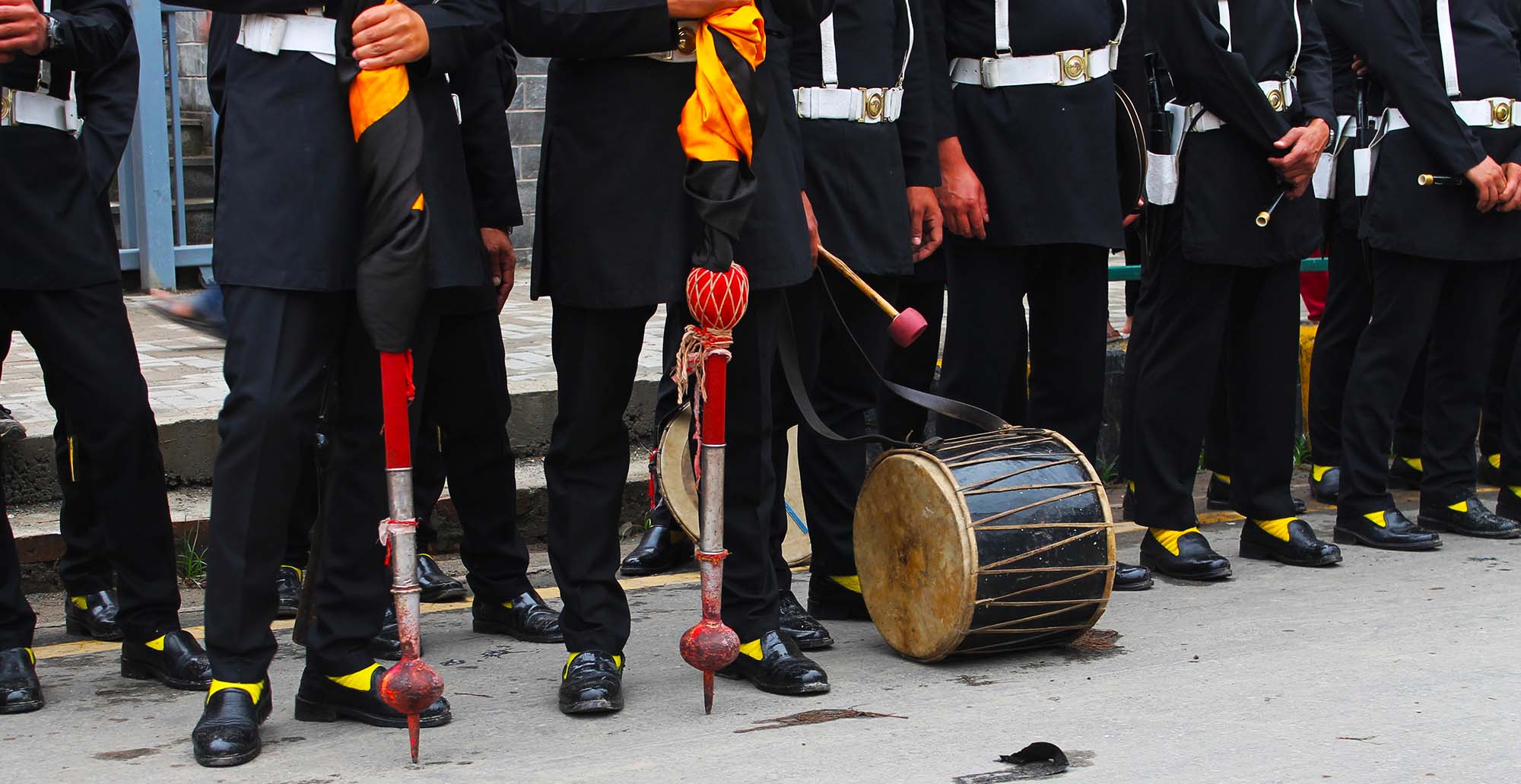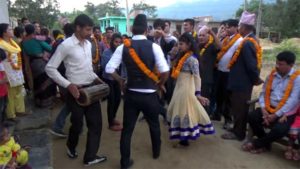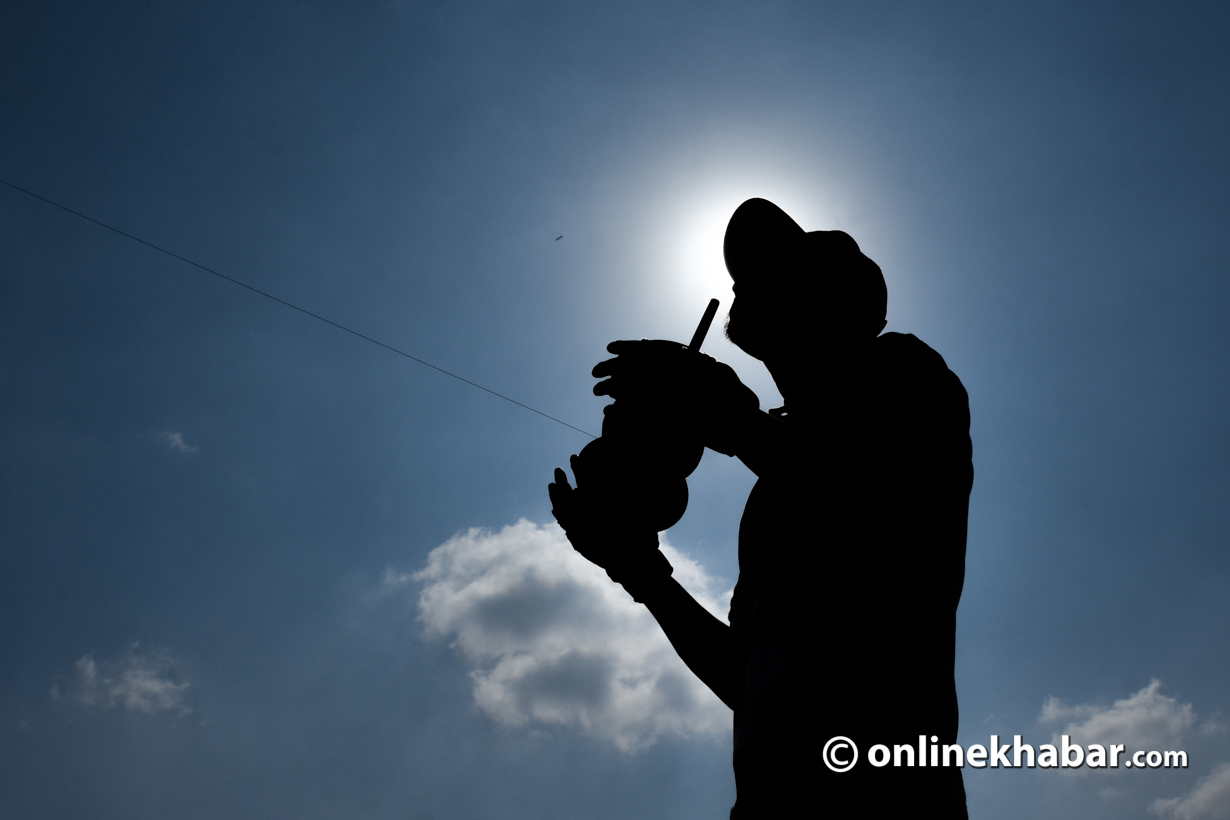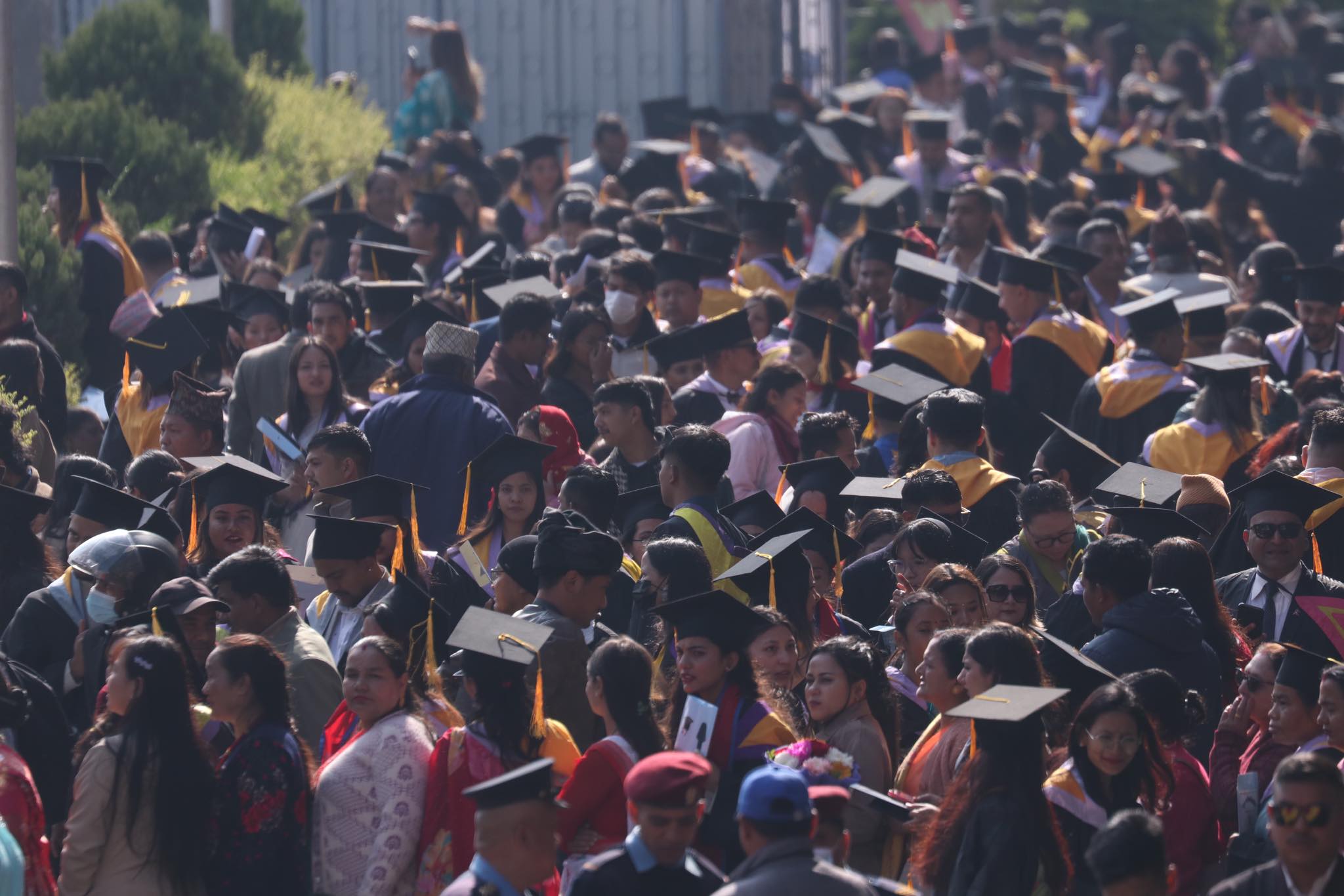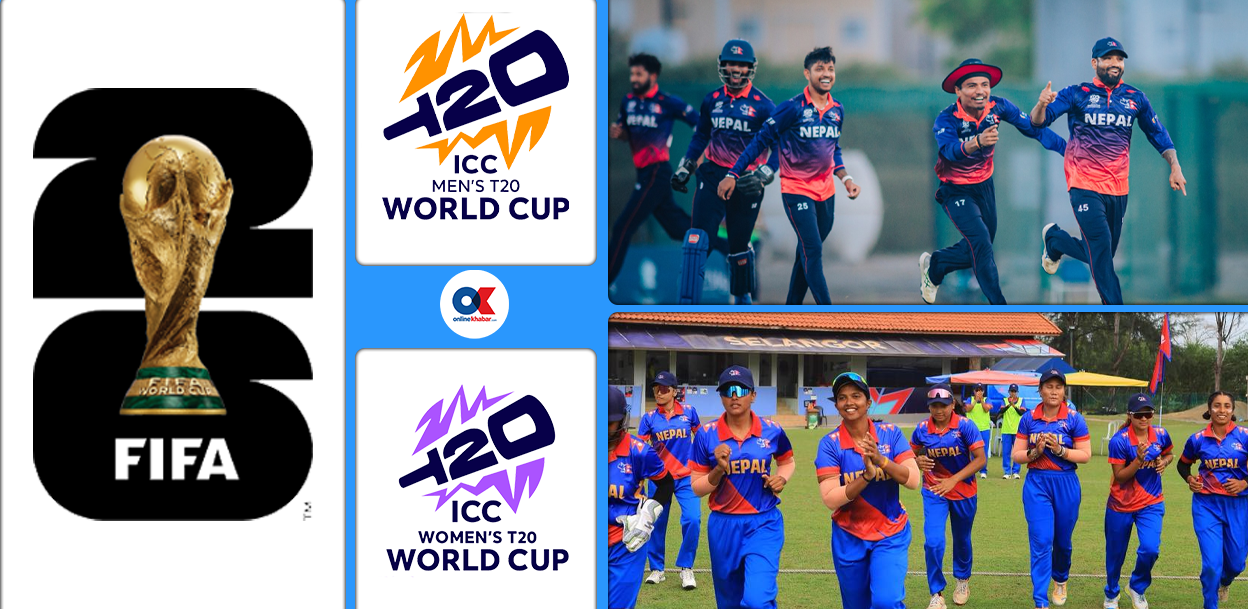The myriad of jatras (loosely translated as ‘festivals’) in Kathmandu Valley have different traditions and folklore associated with them. While some are a few hours long, others stretch for weeks. The gods may be different, the part of town maybe different, but in many cases one thing remains the same.
During any jatra, especially the ones that include a chariot procession, there is a special group of soldiers who literally call the shots: the celebrations begin only when the men in black and white offer gun salute to the god, and everyone goes home only after they fire again, signaling an end to the festival.
The Guruju ko Paltan is a platoon of soldiers who march in two or three lines leading processions as they play ethnic tunes on traditional instruments such as the bansuri, dhol, jhyali, tammal and the naumati.
The platoon’s history can be traced to the time of Prithivi Narayan Shah, the king credited with unifying then Nepal divided into princely states. There are those who say that the platoon had such close ties with the king, that their attire reflected their respect for Shah.
The paltan’s trademark black and white attire has not gone through major changes since its early days. It is said that Pritivi Narayan Shah was regarded as an incarnation of Bhairava, the destroyer, and black captures the essence of his character.
This is the only paltan officially assigned to play in the three cities of the Valley.
It is said that there once was a powerful ‘Gurju’ (priest) Aasanath, who lived in Gorkha and the platoon belonged to him. These soldiers were not warriors, they were only recruited to play ceremonial music.
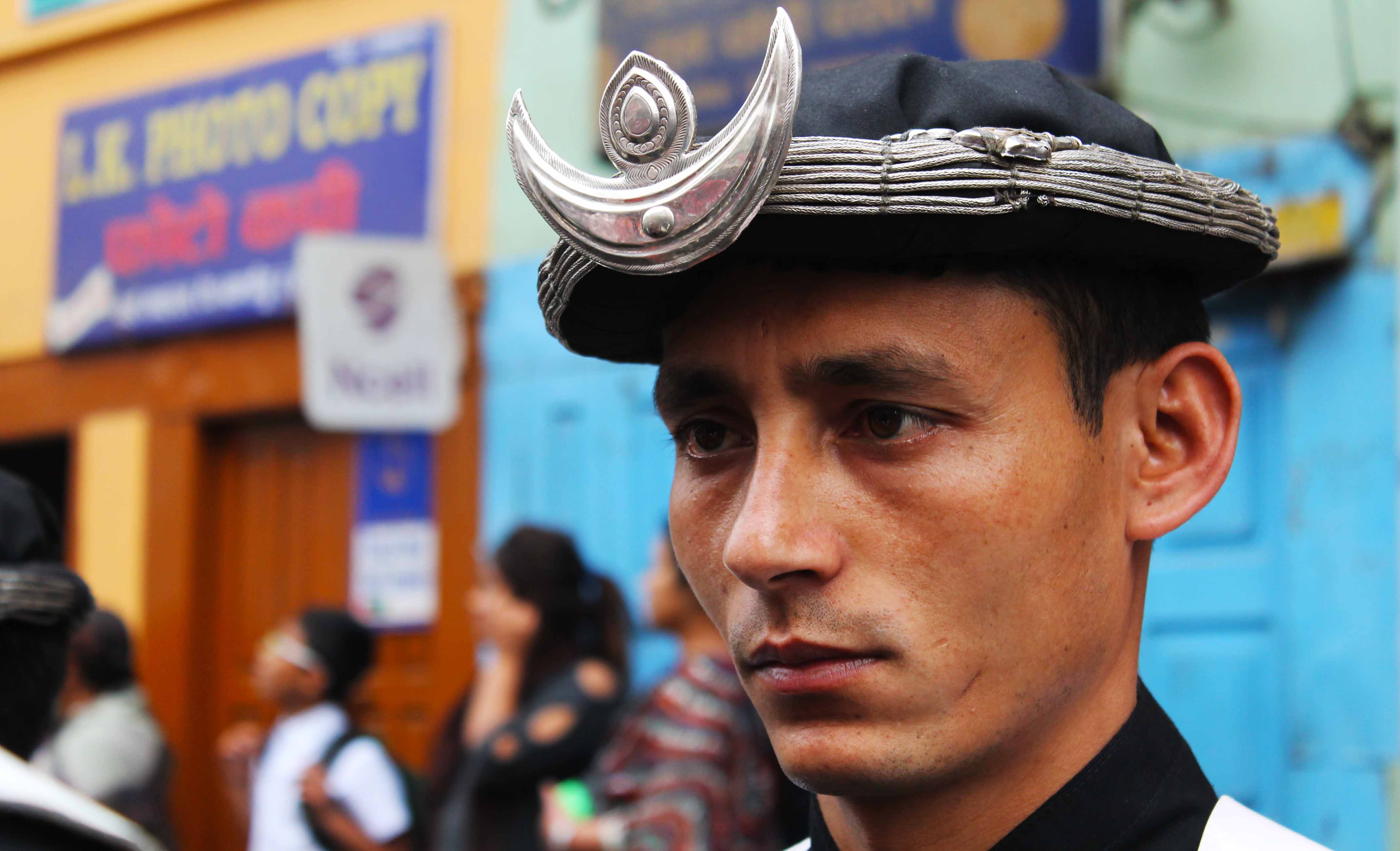
But when Shah conquered the Valley in 1768, the platoon played an important role in the final battle. There are those who go to the extent of saying that Shah’s own soldiers ran away from the battleground.
While that may be a hyperbole, it would be close to reality to suggest that the platoon was in Shah’s good books. As a token of appreciation for their bravery, Shah not only assigned the Guruju ko Paltan important ceremonial roles, but also gave them prominent positions in the palace.
The most significant of the paltan’s duties is to play melodies (dhuns) during important festivals. Throughout the year, they perform at 92 different festivals, which include the Indra Jatra, Dashain, Machhindranath Jatra, Fagu Purnima, and Basanta Panchami.
During festivals such as Indra Jatra and Machhindranath Jatra they lead the chariot processions from the front, and make way for the gods. They do that as they melodies play the Bhairavi Dhun, Mangal Dhun and Malshree Dhun (depending on the occasion).
Each dhun has its own significance, and is played during a particular festival. The Malshree is played during Fulpati to denote that Dashain has started. During a gun salute or during the Fagu Purnima/Shivaratri, the Bhairavi Dhun is played.
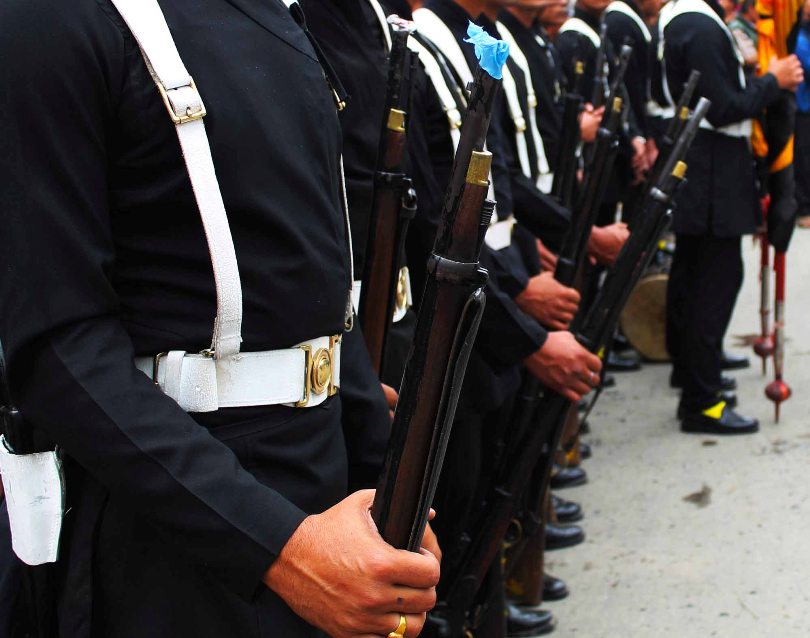
The Paltan usually has 30 or 60 soldiers, depending upon how big a festival is. During major festivals like Dashain, Indra Jatra, Seto and Rato Machhindranath Jatra, there are 60 soldiers on duty whereas during other festivals such as Guheshwori Jatra, Shwet bhairab Jatra, the Paltan consists of 30 soldiers.
So, as the soldiers of the platoon take part in this year’s Macchindranath jatra, they are not only protecting the god of plenty, but also conserving a 300-year-old tradition.
***
Also read
It’s time for the rain god’s procession in Nepal’s historic city Patan again!
In pictures: Lalitpur observes four hundred-year-old ‘lone rider’ ritual
If it’s Nepali New Year’s today, then this is what goes on in Bhaktapur early morning




